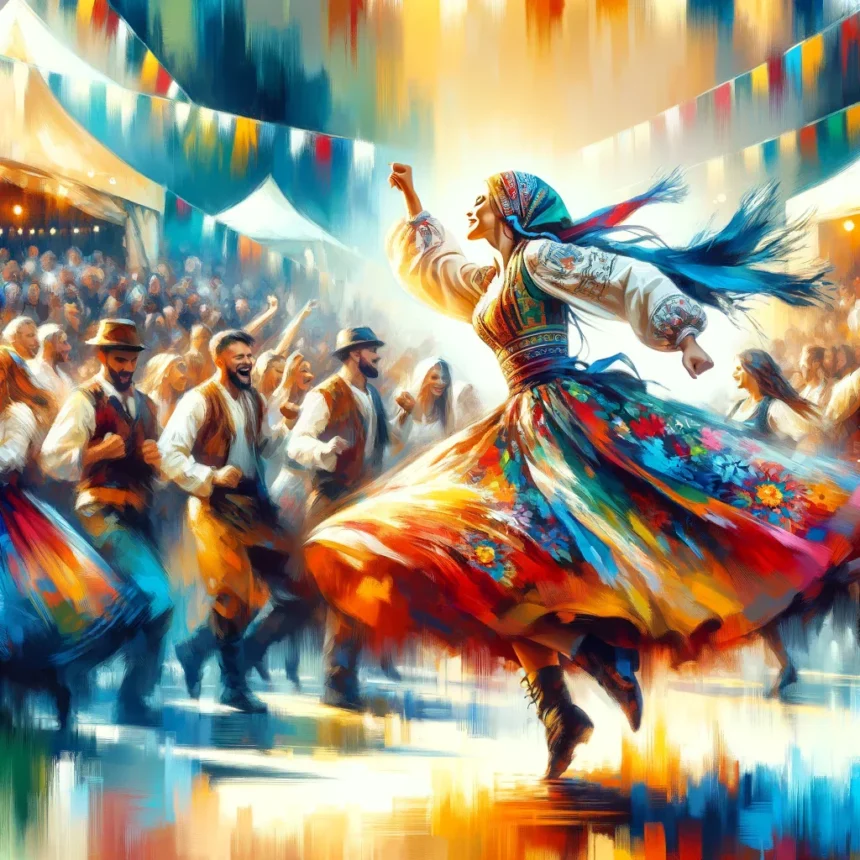Ciulioneros are more than just decorative items—they are symbols of history, culture, and artistry. In this blog, we’ll explore the fascinating world of tracing their roots, understanding their craftsmanship, and revealing the deep meanings behind them. Whether you’re new to the concept or already familiar with it, ciulioneros offer an exciting glimpse into cultural expression.
From ancient rituals to modern-day festivals, ciulioneros continue to captivate hearts around the world. Join us on this journey to uncover the timeless appeal and craftsmanship that keep this tradition alive.
What Are Ciulioneros A Beginner’s Guide to This Timeless Craft
Ciulioneros are traditional decorative crafts that hold deep cultural and symbolic meaning. They are crafted by artisans who use a variety of materials such as wood, metal, fabric, and clay to create intricate designs. The word “ciulioneros” refers to these handcrafted items that are used in ceremonies, festivals, and celebrations across different cultures.
For beginners, may look like simple decorative items, but they carry rich stories passed down through generations. These creations often represent themes like protection, prosperity, or love. The designs vary by region, making each ciulionero unique to its cultural background.
Many people are now discovering through festivals or cultural exhibitions. As the craft gains popularity, are being appreciated not only for their beauty but also for their historical and artistic value. Whether as home decor or festival pieces, they continue to inspire.
The Cultural Origins of Ciulioneros: Where It All Began
The origins of ciulioneros can be traced back centuries to ancient cultures. It is believed that these creations first appeared in spiritual and religious ceremonies. Communities would use during harvest festivals, weddings, and other important life events, making them a symbol of unity and tradition.
In many cultures, were originally used to celebrate the changing of seasons or as offerings to gods for protection. Over time, they evolved to reflect the values and beliefs of different regions. For example, in South America, were used in vibrant festivals to honor nature, while in parts of Asia, they became linked to religious practices.
Today, remain a strong part of cultural heritage. Many communities still create them using traditional methods, preserving this craft for future generations. Through festivals, celebrations, and daily life, ciulioneros continue to connect people to their roots.
How Ciulioneros Are Made: The Step-by-Step Process
Creating ciulioneros involves a detailed and careful process that artisans have mastered over many generations. The first step in making a ciulionero is choosing the right materials. Depending on the region, artisans may use wood, clay, metal, or fabric to begin crafting their designs. The choice of materials often reflects the local environment and cultural traditions.
Once the materials are selected, artisans sketch or plan the basic structure of the ciulionero. This design phase is important, as many carry symbolic meanings that are incorporated into the patterns. After the design is set, artisans begin the detailed work of carving, molding, or weaving the material into shape.
The final step involves adding decorative elements such as paint, polish, or engravings. These finishing touches bring the ciulionero to life, making it a beautiful piece of cultural art. This process can take days or even weeks, depending on the complexity of the design and the artisan’s techniques.
Traditional vs. Modern Ciulioneros: How This Craft Has Evolved
Over the years, ciulioneros have evolved from purely traditional pieces into modern works of art. Traditionally, they were used in spiritual or community events, often as symbols of protection, prosperity, or celebration. In these times, were typically made from natural materials like wood or clay and crafted by hand in small communities.
Today, are not only seen in cultural festivals but are also becoming popular in modern homes as decor. Contemporary artists are blending traditional techniques with modern materials like metal or recycled fabrics to create unique, hybrid. This evolution has helped reach a global audience.
While modern ciulioneros may look different from their traditional counterparts, they still carry the same cultural importance. The fusion of old and new allows artisans to keep the ciulionero craft alive while appealing to today’s tastes and styles.
The Symbolism of Ciulioneros: More Than Just Beautiful Designs
Ciulioneros are not just decorative pieces; they carry deep symbolic meaning. Many of the designs and motifs used in represent themes such as love, protection, and prosperity. These symbols are often passed down through generations, giving each ciulionero a unique story and significance.
For example, a ciulionero designed with intricate floral patterns might symbolize the connection between humans and nature. In some cultures, are believed to protect homes from negative energies, while in others, they are used to mark important life events like births or weddings. The meaning of each ciulionero can change depending on the cultural context and the artisan’s intention.
The symbolism in adds to their appeal, making them more than just art pieces. Each ciulionero tells a story, making them cherished items in homes and communities across the world.
Materials Used in Making Ciulioneros: From Wood to Metal
The materials used to create ciulioneros play a key role in their overall design and meaning. In many regions, wood is a popular material, often chosen for its natural beauty and ease of carving. Wood ciulioneros can be intricately detailed, with each piece representing themes like nature or spirituality.
Clay is another common material, especially in areas where pottery is a traditional craft. Clay ciulioneros are often shaped and painted with vibrant colors, giving them a unique artistic flair. Metal, on the other hand, is used for ciulioneros meant for long-lasting durability and ceremonial use.
Some artisans also experiment with mixed media, combining wood, metal, and fabric to create innovative designs. The choice of material often depends on the artisan’s culture, local resources, and the intended symbolism of the ciulionero.
Regional Variations of Ciulioneros: How Different Cultures Make Them Unique
Ciulioneros are crafted differently in each region, reflecting the local traditions and materials available. For instance, in South America, ciulioneros are known for their bright colors and lively patterns. These pieces are often used in festivals to celebrate nature and community. The designs may include symbols of animals, plants, and natural elements that are important to the culture.
In contrast, ciulioneros from Eastern Europe tend to be more earthy and minimalistic. These are often made from materials like straw or wood and used in seasonal celebrations to bring good luck. They often feature simple patterns with deep symbolic meanings tied to folklore and local beliefs.
In Southeast Asia, ciulioneros are sometimes made from silk or bamboo and used in religious ceremonies. These are decorated with spiritual symbols, reflecting the culture’s focus on harmony and balance. Each region brings its own unique twist to ciulioneros, making them a diverse and fascinating craft.
The Role of Ciulioneros in Boosting Local Economies and Tourism
Ciulioneros have become an important part of many local economies, especially in regions where tourism plays a key role. Artisan communities that specialize in making often depend on this craft for their livelihood. As more tourists seek out authentic cultural experiences, the demand for has grown both locally and internationally.
Tourists are often eager to take home as souvenirs or decorative items, contributing to the local economy. Many artisan workshops now offer hands-on experiences where visitors can see how are made or even try making their own. These workshops create a deeper connection between the tourists and the culture they are visiting.
This increased interest in has helped preserve the craft, ensuring that future generations can continue to enjoy this tradition. It has also encouraged local governments and cultural organizations to support artisans and promote ciulioneros as a valuable part of their cultural heritage.
Eco-Friendly and Ethical Ciulioneros: Sustainable Craftsmanship for the Modern World
As the popularity of ciulioneros grows, so does the awareness of their environmental and ethical impact. Many artisans now prioritize using sustainable materials, ensuring that the craft remains eco-friendly. Traditional often rely on natural, biodegradable materials like wood or clay, which helps reduce waste and protect the environment.
In modern times, some artisans are using recycled materials to create adding a contemporary twist to the traditional craft. This approach not only reduces the environmental footprint but also appeals to consumers who are looking for ethical and responsible purchases. Using eco-friendly techniques makes ciulioneros more appealing to tourists and collectors alike.
Sustainable Practices in Ciulionero Craftsmanship
- Natural materials: Using wood, clay, and fabric sourced sustainably
- Recycled materials: Incorporating repurposed textiles, metal, or plastic
- Eco-conscious techniques: Reducing waste during production and limiting resource depletion
Sustainable craftsmanship ensures that can continue to thrive in modern markets while respecting the environment. This shift towards eco-friendly practices also helps to keep the cultural and artistic value of ciulioneros alive for future generations.
Conclusion:
Ciulioneros are much more than just pretty decorations. They are special items that carry deep meanings and show off different cultures’ unique styles and traditions. From their rich history to their modern-day appeal, continue to capture our hearts and imaginations. They remind us of the beauty in tradition and the joy of celebrating with art.
Whether you’re admiring a ciulionero at a festival or adding one to your collection, you’re connecting with a piece of history and culture. As more people discover and appreciate these amazing crafts, ciulioneros will keep inspiring us and making our world a more colorful and meaningful place.






